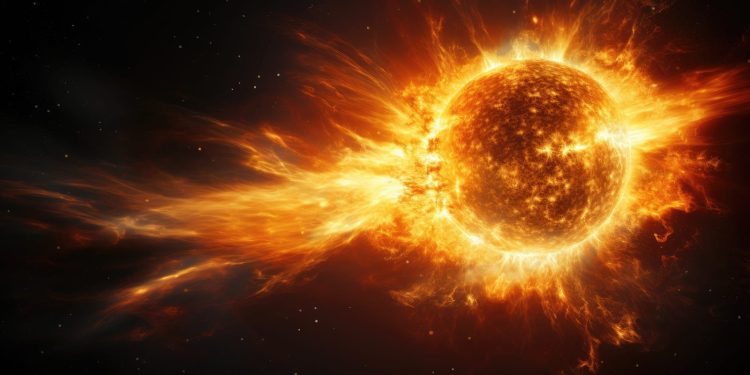In 1859, the Earth was struck by one of the most powerful solar storms ever recorded, known as the Carrington Event. This massive burst of solar energy unleashed a wave of geomagnetic activity that caused telegraph systems across Europe and North America to malfunction. In some cases, telegraph lines even caught fire as electrical surges overwhelmed the infrastructure. The skies lit up with stunning auroras, visible as far south as the Caribbean, signaling the immense force of the storm. While the event stands as a stark reminder of the Sun’s power, recent research reveals that even more extreme solar storms have occurred in the past—events that, if they were to happen today, could bring our modern technological world to a standstill.
Later that same year, Charles Darwin published his groundbreaking work On the Origin of Species, reshaping our understanding of life on Earth. Yet, the Carrington Event, though lesser known, was a dramatic reminder that our planet is also vulnerable to the unpredictable forces of space.
But the Carrington Event was far from the most dangerous storm the Earth has ever seen. New research published in Nature reveals evidence of far more extreme solar storms in our distant past, storms that could wreak unimaginable damage on our highly technological society today. These findings come from an unlikely source—ancient trees, which have preserved the record of these solar superstorms in their growth rings.
Solar storms, triggered by coronal mass ejections (CMEs) from the Sun, hurl vast clouds of charged particles toward Earth. When these particles collide with Earth’s magnetosphere, they can cause geomagnetic disturbances that disrupt our infrastructure.
The Carrington Event of 1859 is often cited as the benchmark for solar storms, but scientists now know that even more powerful storms have hit our planet. One such storm, in 774 AD, was so intense that it dwarfed the Carrington Event. If a storm of that magnitude struck today, it could cause widespread power outages, disrupt global communication networks, and potentially cripple satellite systems.
Tree Rings: Nature’s Time Capsules
The key to understanding these ancient solar superstorms lies in the rings of trees. Trees absorb radiocarbon (carbon-14) from the atmosphere as they grow, and this radiocarbon acts like a timestamp for solar activity. When a massive solar storm hits, it triggers a spike in atmospheric radiocarbon, which is then recorded in the tree’s annual growth rings.
In 2012, a team led by Fusa Miyake from Nagoya University made a breakthrough discovery when they found a sharp increase in radiocarbon levels in tree rings dating back to 774 AD, marking one of the most intense solar storms in history. Further research has uncovered similar spikes from other extreme solar events, such as those in 993 AD and even as far back as 14,370 years ago, during the last Ice Age.
These findings offer scientists a new way to track ancient solar activity and better understand how frequently these superstorms occur. The data from tree rings not only provides a timeline of these events but also offers insight into the processes within the Sun that trigger them.
The implications of these ancient storms for our modern world are staggering. The infrastructure we depend on today—satellites, power grids, global communications—was unimaginable in 1859. A solar superstorm on the scale of those detected in tree rings could bring this infrastructure to its knees.
High-altitude satellites would be especially vulnerable, as they lie beyond the protective shield of Earth’s magnetosphere. In the event of a massive solar storm, we could see satellites knocked out of orbit, GPS systems disrupted, and large sections of the planet plunged into darkness as power grids fail under the strain.
Governments and agencies like NASA and the European Space Agency (ESA) are already monitoring solar activity, but predicting these superstorms remains a significant challenge. The Carrington Event was the first recorded solar flare, yet over a century later, our ability to forecast solar storms remains limited.
Can We Protect Ourselves?
As scientists continue to analyze tree rings from around the globe, they are racing against time to gather more data on these past events. Understanding how often these superstorms occur is crucial for predicting future threats. While the radiocarbon record has given us valuable insights into the Sun’s behavior, much remains unknown.
Can we protect our modern world from the next solar superstorm? Engineers are working on building more resilient satellite systems and power grids, but the scale of the threat is vast. The only certainty is that another major solar storm will happen—it’s just a matter of when. Are we ready for the next solar catastrophe? If history is any indication, the Sun’s power far exceeds anything we’ve witnessed in modern times. The ancient tree rings tell us that the future holds not just brilliant auroras, but also potentially catastrophic consequences.











